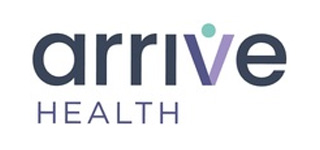Every day, hospital teams are facing inpatient flow challenges like excessive emergency department surgical admit boarders. To help overcome these challenges and improve access to urgent care, clinical leaders have focused on improving efficient discharge practices to ensure beds are available for incoming patients.
With a goal to both safely and efficiently discharge patients as soon as clinically ready, many hospitals may be tempted to consider project-based initiatives to improve discharge practices – but these initial improvements are often short-lived and fail to sustain long-term results.
Turning to technology: Improving patient discharge with intelligent automation
For hospital leaders today, the advent of intelligent automation, which uses artificial intelligence, workflow automation, and streamlined communication, delivers an operations management platform that provides wide-ranging past, present, and future insight into hospital operations in a way manual processes simply cannot. AI-driven hospital operations management systems are no longer a future-state promise, but are already actively working to improve performance in 100 hospitals across 20,000 beds in the US. Those who will reap the most rewards will be the early adopters of these systems — and the ones who pair AI with change management.
After gathering insights from hospital leaders across the country, five key steps emerged to help create the system-wide culture change needed to ensure sustainable discharge performance improvement from using AI and automation platforms.
1. Assign a day-to-day operational performance leader
Performance leaders are designated individuals who own the improvement initiative and are responsible for the daily coordination of care by the teams on the ground. Just as important as actually appointing someone to this role is that this simply cannot be a ceremonial title. Instead, the performance leader must have real authority or influence, be empowered to gather solid, reliable data from individual areas, break down barriers to foster collaboration, and be provided the tools necessary to design, test, and implement improvements.
2. Develop a coordinated system-wide patient discharge process
Hospitals as a whole must view the patient discharge process as a connected approach throughout each patient’s care progression, as well as understand the impact to the enterprise as a whole. Steps in this process, including confirming and performing labs, giving discharge approvals, and ensuring transportation and homecare, cannot be managed in a silo. Consistent, sustainable discharge practice performance excellence demands a system-wide process that must be coordinated, proactive, and constantly adapting.
3. Implement a system for accurate predictive insights
Organizations must also deliver the right data in advance of a capacity crisis to enable teams to take action (with the right people and processes in place). Understanding anticipated census, combined with early identification of the most likely discharges, allows all stages of care progression to be coordinated and connected. This allows everyone involved in discharge management and capacity planning to make a meaningful impact to ensure that patient length of stay is not unnecessarily extended, and beds are available for anticipated incoming patients.
4. Identify patient discharge barriers and recommended actions for each stakeholder
With predicted census known and the most likely discharges identified, hospitals must have a system that delivers real-time information and updates, provides specific recommended actions at the system and unit level to address and eliminate barriers to discharge (i.e., classification, outstanding tests, post-acute needs, and placement), and offers coordinated, cross-functional communication so everyone knows what to do to ensure success.
5. Eliminate communication siloes
Reducing delays and duplicate efforts begins by eliminating manual, untimely, and inconsistent communication methods–phone calls, written notes, and emails. All cross-functional areas must work from a single source of truth to identify, understand, and address critical priorities, their specific action items, the current status, timelines for completion, and how events in one area affect all the others.
As demand for care increases and capacity and resource constraints loom large, patient flow initiatives will increase in urgency. There’s never been a more important time for hospital leaders to seize this moment and turn to intelligent automation to improve performance.



